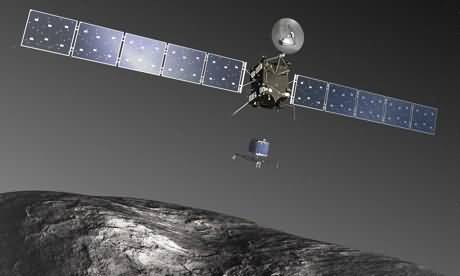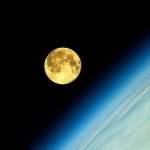Rosetta shuttle catches up with comet after 10 years
The Rosetta spacecraft, launched by the European Space Agency (ESA) 10 years ago to land on comet 67P/Churyumov-Gerasimenko, has successfully entered the comet's orbit.
"We've reached the comet!" said Sylvain Lodiot, ESA Director of Rosetta spacecraft operations, from headquarters in Germany.
ESA Director Jean-Jacques Dordain said in a statement, "We've been working towards our goal for exactly 10 years, 5 months, and 4 days. We've orbited the Sun five times and covered a total of 6.4 million kilometers. Finally, I'm delighted to say we've reached our goal."
'Deep sleep'
Launched in 2004, Rosetta, attached to a rocket, pursued Comet 67P. Using the gravitational pull of Earth and Mars to accelerate, Rosetta was able to travel 6 million kilometers.
After flying past the comet numerous times and failing to maintain its orbit, Rosetta finally reached its target.
To conserve the shuttle's fuel, conductors in Darmstadt, Germany, kept Rosetta dormant for 31 months.
Rosetta, awakened from its last deep sleep in January, began tracking the comet.
For the past two months, Rosetta has been performing a series of manoeuvres to slow down and avoid flying past the comet.
The comet's speed is 55,000 kilometers per hour. The Rosetta spacecraft's speed was slowed so it could travel side by side with the comet.
From 550 million kilometers away from Earth, commands given to Rosetta took up to 22 minutes to arrive.
The gap between them had widened so much that Rosetta's final maneuver, which it performed on Wednesday to reach orbit, was commanded on Sunday night.
“The orbital insertion process has been the most complex and experimental operation we have ever conducted,” said Jean-Yves Le Gall, head of the French Space Research Unit.
Rosetta now needs to fire its engines every few days to stay in orbit around comet 67P.
The shuttle, which will remain in orbit for 15 months, will examine the surface of the comet and send information back to the center in Germany.
'Rubber duck'
As Rosetta approached the comet, it began sending back increasingly detailed images.
In recent photos, the comet's shape has been compared to a duck by scientists, and it has been nicknamed "Rubber Duck."
"Personally, this is the sexiest, most awe-inspiring project I've ever worked on," says Dr. Matt Taylor, a scientist working on the project. "We're working on a project that pushes the boundaries of discovery, technology, and science."
Comet 67P is expected to heat up and begin to emit more gas and dust clouds as it approaches the Sun. This will give Rosetta the opportunity to gather detailed information.
In November, Rosetta's mission will become even more challenging. Rosetta is scheduled to approach the comet within a few months and will then land a module on the surface.
The module, called Philae, will attempt to grab onto the comet with its hooks and pull itself to the surface.
If the Philae mission is successful, it will be the first time samples will be taken from the surface and interior of a comet.







